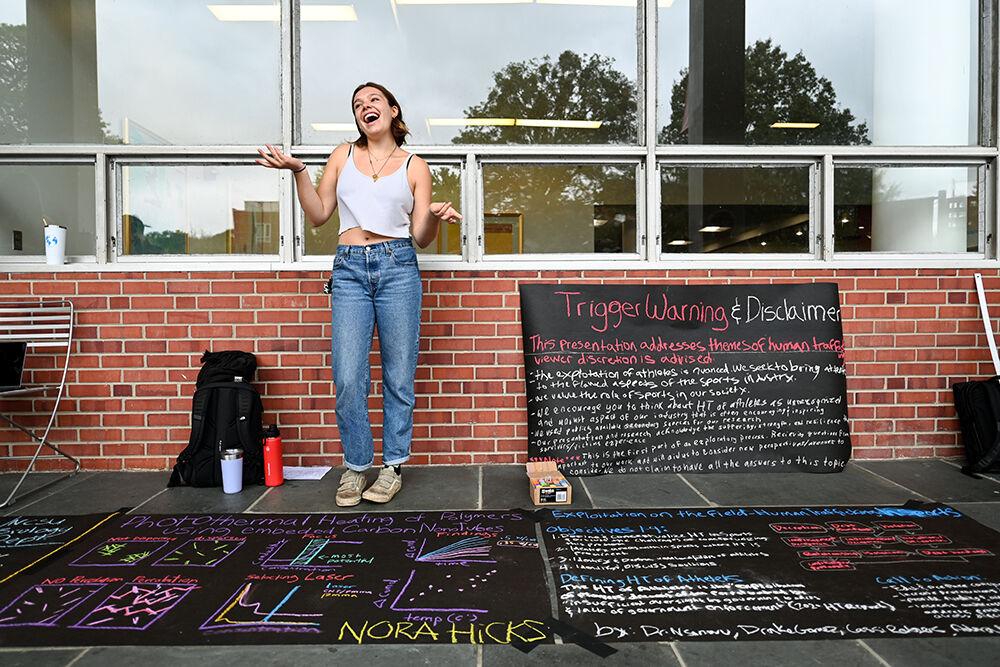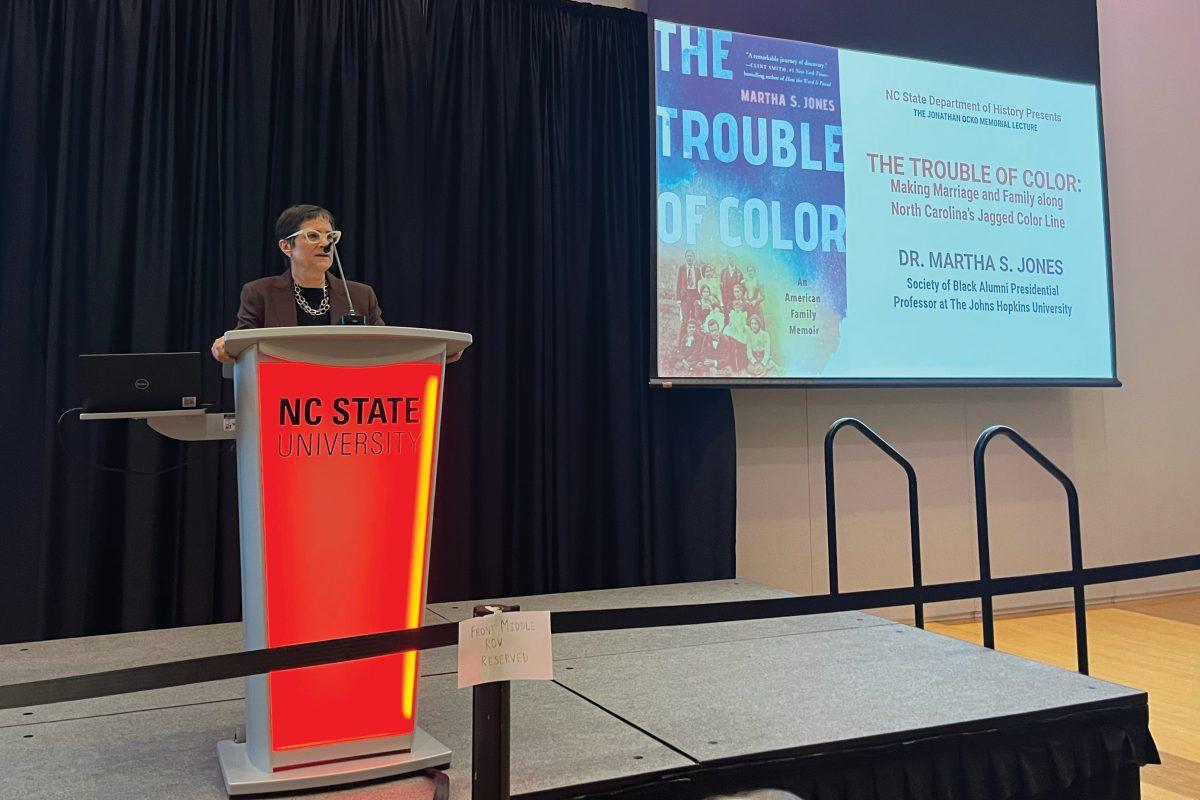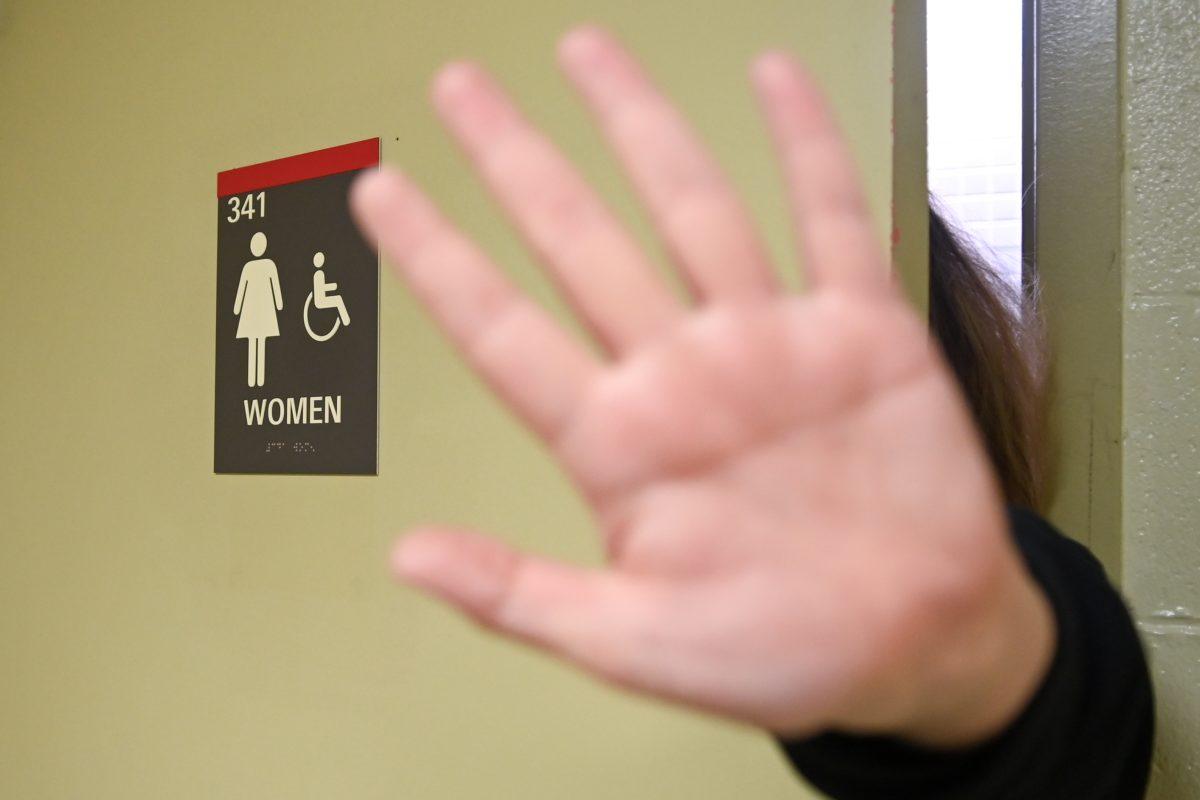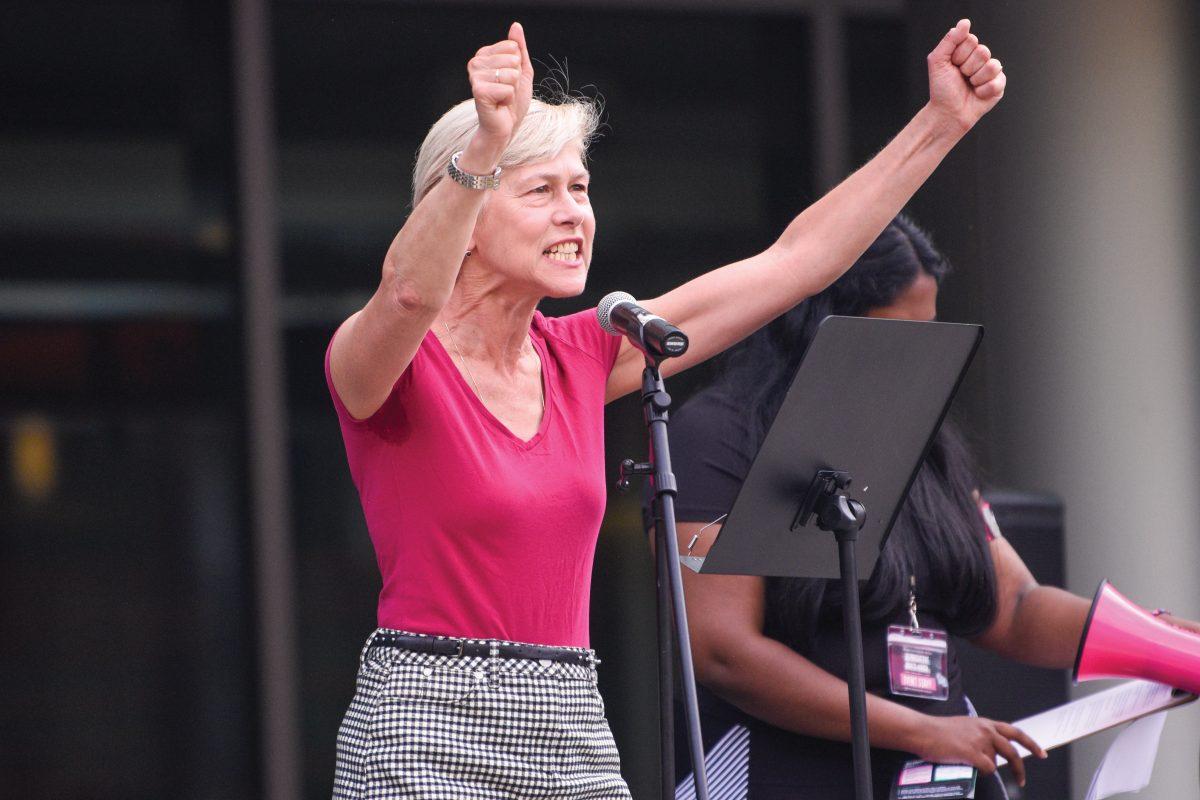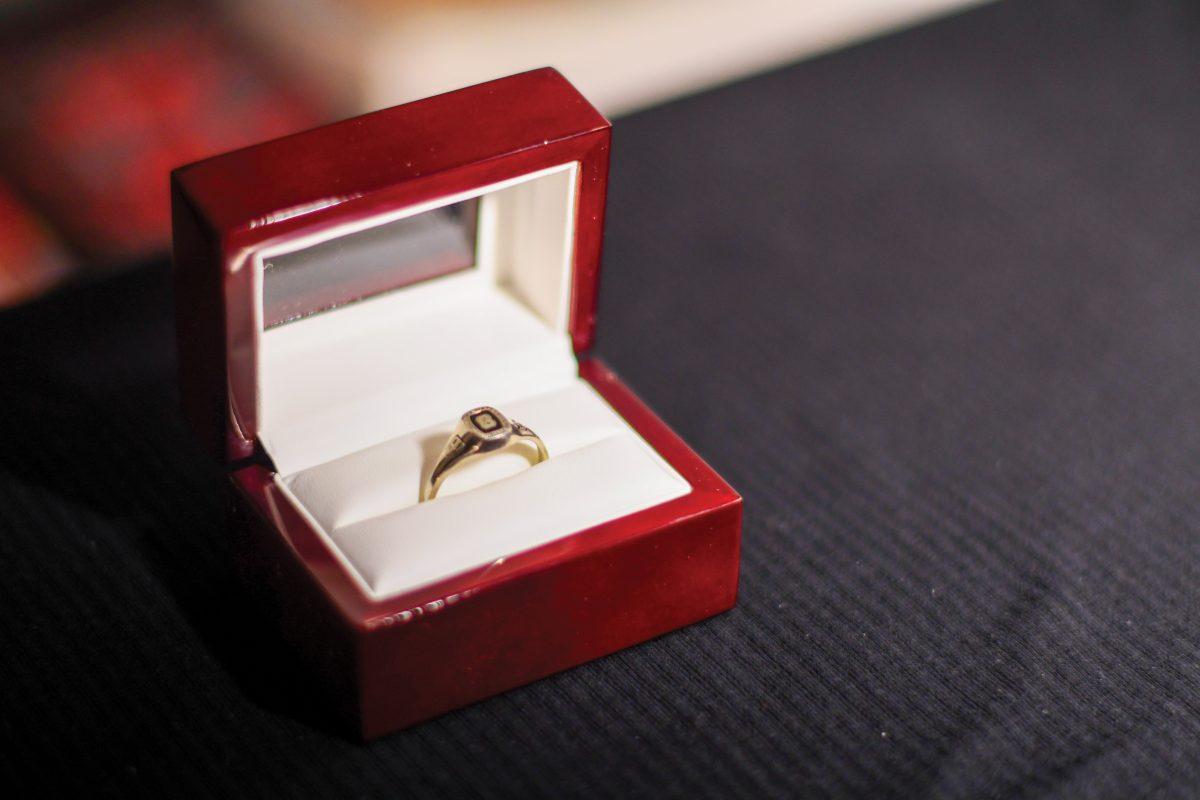Lemurs, liver disease, proteins and power plants paved the Hillsborough Street entrance to D.H. Hill Library Tuesday morning as undergraduate researchers put their artistic skills to the test to share their work in a visual format.
Sidewalk symposium is an annual fall event held by the Office of Undergraduate Research that gives undergraduate students from all disciplines and experience levels the opportunity to artistically share their research and scholarly projects in chalk art.
Janet Goins, director of the Office of Undergraduate Research, said students were encouraged to use as much illustration and as little text as possible in their presentations.
“Hopefully, [the research] comes across as more accessible, particularly in this artistic form,” Goins said. “And we’re also challenging our presenters here to think about different ways to present their research outside of what’s more typically thought of in research with a PowerPoint presentation or poster.”
For some students, the event provided the opportunity to practice presenting their research in a low-stress environment.
Karina Seebaluck, a fourth-year studying psychology and Spanish, presented her work exploring ways to improve the implementation of sexual health programming in the foster care system.
“I remember going to last year’s sidewalk symposium and being super inspired by how people visualize their research in such a casual way,” Seebaluck said. “I feel like at this stage, especially events like this, it’s a really supportive environment for researchers to just do their thing and ask questions.”
Other students, such as a group who researched the environmental footprint of power near NC State’s campus, used the event as a way to prepare to give bigger presentations down the road.
Shamik Bhattacharya, a fourth-year studying environmental science and a member of this group, said the team intends to present at the State of North Carolina Undergraduate Research and Creative Activities Symposium later this year.
“Our advisor, Dr. Richmond-Bryant was like, ‘How about we just start small and go big?’ So that’s exactly what we’re doing,” Bhattacharya said.
Goins said another goal of the event was to bring visibility to research opportunities for undergraduates on campus. Kaya Rosselle, a third-year studying plant biology, presented work with Paciulli Lab on mother-infant behaviors in aye-aye lemurs. Rosselle said her experience with research has helped her learn about which fields she’s interested in.
“It’s good, when you’re in the STEM field, to try to figure out what kind of stuff you like to do — field work, lab work or anything along [with] that,” Rosselle said. “Even if … whatever you’re doing specifically isn’t what you want, scientific writing and presenting is a big part of science and STEM stuff, so having opportunities to practice that is really important.”
Research at the symposium was not limited to STEM fields, with five of NC State’s 10 colleges represented.
“I think it’s also a really good nod to our folks who do research in the humanities, arts and social sciences — that their research is valid,” Goins said. “So it’s a nice call into the importance of arts in particular.”
Just as the experience-level of researchers varied, the art demonstrated a range of styles and abilities.
“One that we particularly loved from last time was a student who’s doing a project on ants, and they had just very good artistic technique,” Goins said. “But honestly, I think I really love the ones that are even just like a stick figure. … And it’s a judgment free zone. We just want you to share your research however you can, and I would be right there with them doing stick figures.”
Holly Hurlburt, associate dean of University College and a professor in the Department of History, encouraged researchers to sign their artwork, taking ownership of the research they do.
“You’re an artist now,” Hurlburt said. “We’re joining the creative process with research here.”


